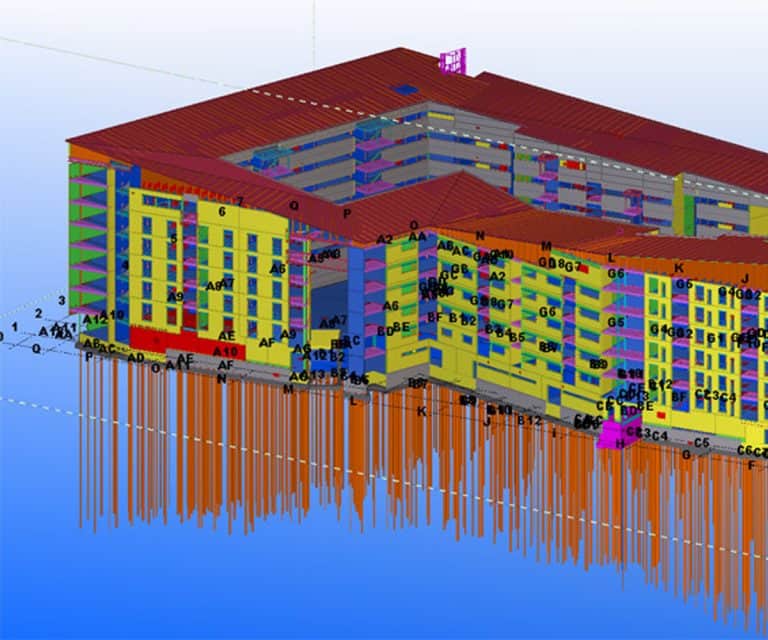Going digital: why is it important?
by Elaine Lewis, Managing Director, Cadventure
Going Digital is more than just reducing or removing paper and increasing digital exchange of data via file share or email. It presents a great opportunity to re-evaluate every step in your design engineering and construction process. This is not about digitising an analogue process but stripping it back to evaluate how information is generated, shared, published, and managed through the lifecycle of an asset.
Therefore, I asked myself, why is digital transformation important?
Staying competitive in a constantly changing global marketplace depends on an organisation’s ability to rapidly adapt through the adoption of new technologies. IDC estimates that worldwide spending on the technologies and services that enable digital transformation will reach almost $2 trillion in 2022.
It also impacts the bottom line. According to recent research, digital transformation initiatives can result in productivity gains of 14 to 15% and cost reductions of 4 to 6%. In a 2% margin business this can make a major impact on the bottom line, but it does not happen by chance.
Following the Grenfell Tower disaster, the Hackett report highlighted the importance of information and the need to develop a “Golden Thread” – the requirement for reliability, accuracy, auditability, accountability, and transference through whole lifecycle.
Year on year the amount of data we produce for projects increases exponentially. Without continuous improvements in standards, process and management of information we will fail in our duties. Technology can help us with these improvements, along with robust protocols at a project, national and international level.
This becomes even more important as we start integrating data at local authority levels and with projects such as the National Digital Twin. These can be an entirely new business model to support flexibility, efficiency and cost control. We think of digital transformation as a journey not a destination so never think that once you have “done” this, there is no room for continuous process improvement.
Digital Service Mindset
While 2020 was not easy for any organisation, those that are thriving have embraced a digital service mindset. This has impacted not just construction but online shopping, delivery, medicine, automated supply chain optimisation, visitor attractions…. the list goes on.
A number of companies that I spoke to in 2020 began to use the term “pivot” to describe a transformation in their business. This could mean anything from facilitating the needs of their workforce to work from home, to developing office rotas to ensure staff returning to the office could remain safe and socially distanced, plus looking at new sustainable working practices to support net-zero carbon targets.
In some cases, new technology emerged or was repurposed, for example, the use of a security access card could become a social distancing monitor and Covid contact tracing device. Equally safety equipment like hard hats with a mounted device can promote social distancing, emitting a progressively louder alarm when workers are too close to each other. It enables them to focus on tasks rather than worrying about proximity to co-workers or potential virus exposure.
Starting at the top
Digital transformation starts at the top. It is a strategic business decision to adopt digital technologies supported with data to demonstrate improved productivity, better processes, management of business risk and cost control.
As a result, these improvements not only engender better customer and employee experiences but can also in some cases avoid litigation and preserve reputations alongside the cost of repairing or replacing structures. All of this because your project teams can identify and respond to RFIs or identify change management responsibility long after project teams and client contacts have moved on.
Does one size fit all? Absolutely not. An effective strategy has to be right for the organisation and your information needs. Within a large construction company, for example, there will be a significant number of stakeholders with different digital requirements, using a myriad of process, software tools and solutions.
This is why a top-down approach is vital as imposing a rigid all-encompassing Common Data Environment will naturally meet resistance when users have not been canvassed as to their requirements.
It should however represent a good opportunity to “clean house” by documenting processes, streamlining the software portfolio, and stripping back to basics.
Education in this is also key. For some teams, a simple structured F-Drive may be all they think they need, until they understand how hard it is to file and find email or be certain they are using the latest iteration of a document or drawing.
The Cadventure approach
For Cadventure, in 2020 digital transformation meant evaluating our entire enquiry to sale process to identify how information moved through our organisation and where the bottlenecks were. We were keen to see how we could eliminate double entry of information, reduce administration and ultimately provide a faster service to clients. Like many other businesses, we identified silos of information trapped in a range of systems that barely “talked” to one another or required a degree of manual intervention.
Today we have a single source of truth for marketing, sales, support, and finance. I am pleased to say that this investment pays for itself on a daily basis.
So how do you get started?
Make sure you have that C-level buy-in with the associated investment to achieve the required return. Assemble the best team you can with the right talent and mindset to deliver. Audit what you have and set realistic KPIs for what you are looking to accomplish. Pick pathfinder projects to find those quick wins and demonstrate early achievements. Measure your performance against your KPIs and create dashboards to track progress. Communicate early and often about successes. Share lessons learned and implement these findings on the next phase of your digital transformation.
And finally remind yourself that this is a marathon not a sprint.







